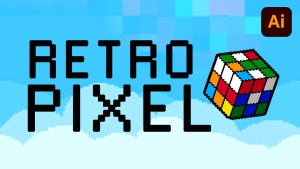News
Is the internet ready for the Apple Vision Pro?
In other words, can the bandwidth required by Apple's AR/VR glasses saturate the network?

- April 11, 2024
- Updated: April 26, 2024 at 10:49 AM
Augmented and virtual reality technologies have advanced the concept of the metaverse, now capable of manipulating the real world and immersing users in digital experiences. And that brings challenges in terms of bandwidth and network capacity.
This year has seen the long-awaited debut of Apple in this dynamic technology with the launch of its Apple Vision Pro. And Apple refers to its metaverse technology of augmented reality and virtual reality as “spatial computing”, which “seamlessly combines digital content with the physical world”, using hand and eye tracking for a smooth digital experience.
And for the Apple Vision Pro and other similar devices to have widespread use, our foundational networks must guarantee ultra-fast and low-latency connectivity. This is essential to accommodate the significant increase in traffic and provide seamless immersive experiences.
Without a top-level network, the Apple Vision Pro has no future
The Apple Vision Pro is designed to be used in a “controlled environment”, ideally at home, but there are already examples of people using it outside the home.
Features like spatial video and spatial video capture, immersive FaceTime, and high-definition video playback require high-performance WiFi connectivity, which requires fast speeds, low latency, and high-bandwidth internet connectivity (fiber optic). Some augmented reality and virtual reality applications may require broadband speeds of 400 Mbps.
However, approximately 44% of households in the United States, the only country that has the Vision Pro, do not have access to fiber connectivity.
This would likely make this technology useless for this large segment of the population. Currently, the Federal Communications Commission (FCC) requires consumers to have access to minimum real download speeds of 25 Mbps and minimum real upload speeds of 3 Mbps.
However, this level of home network performance does not meet the demands of an immersive VR environment, especially when other devices are being used simultaneously.
The revision of the minimum broadband speed definition to 100 Mbps is being debated. However, researchers estimate that to achieve the ultimate immersive multimedia experience, between two and five Gbps may be necessary, indicating that even this proposed increase may not be enough.
Apple Vision Pro is an interesting vision of what the future could hold for metaverse technology of augmented reality and virtual reality. Its commercial launch is an interesting litmus test not only to determine to what extent consumers are ready and willing to experience these immersive experiences, but also to what extent networks are prepared to offer them.
Journalist specialized in technology, entertainment and video games. Writing about what I'm passionate about (gadgets, games and movies) allows me to stay sane and wake up with a smile on my face when the alarm clock goes off. PS: this is not true 100% of the time.
Latest from Chema Carvajal Sarabia
- We already know how much the 2025 iPhone SE will cost: finally a cheap iPhone
- These are the 6 most anticipated action movies of 2025
- These are the 7 biggest milestones in the aerospace industry so far this millennium: Review 24 years of rockets with us
- A group of flat-earthers take a $35,000 trip… to discover that the Earth is round
You may also like

Graphic Design Trends 2025: Retro Pixel Art and How to Create It with the Help of Adobe
Read more

Yes, we can measure a person just by taking a photo of them
Read more

Final Fantasy VII Rebirth has performed well, but now at Square they only trust in multiplatforms
Read more

Originally, Kingdom Hearts was so difficult that at Square they compared it to a Takeshi Kitano game
Read more

You didn't know it, but the world of chess just suffered because of some cowboys
Read more

WhatsApp collaborates with Google so you can find out the origin of any image sent to you
Read more